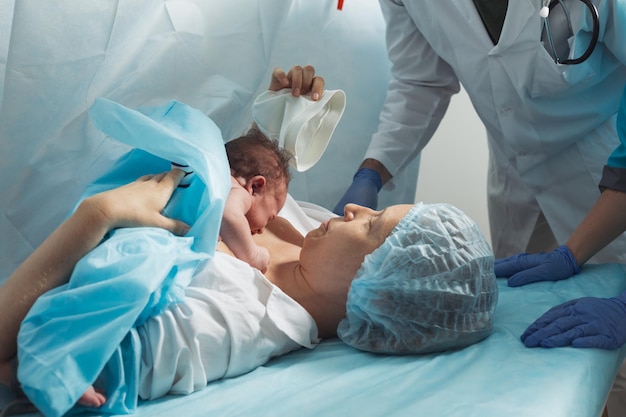Caesarean delivery is a lifesaver for both the mother and the baby when the birth through the natural process is not possible or is unsafe. In this type of surgery, the doctors make surgical incisions in the mother’s abdomen and uterus to deliver the baby. Though a c-section is generally a safe surgery, it involves certain risks due to its complicated process. Most women nowadays prefer a c-section over and above natural vaginal delivery; the probable reasons might be fear of labour pain in normal childbirth, previous birth experiences or late pregnancies, and lifestyle conditions. However, obstetricians generally do not encourage a caesarean delivery unless there is an emergency. Following are the prime reasons why your doctor might opt for a C-Section instead of vaginal birth:
Long Delivery: In the case where the labour last long due to slow cervical thinning or the large size of the baby compared to the birth canal, a c-section is the best choice to avoid complications.
Abnormal Position: If the baby is in an unusual position; for example, if the butt and feet or the shoulder and side of the baby are towards the birth canal, caesarean birth is the safest way to choose.
Multiple Babies: Your c-section specialist might suggest a c-section delivery if you are having multiple babies and they are not in a heads-down position.
Issues with Placenta: In case; you have a low-lying placenta covering the cervix fully or partially, you might need a c-section birth.
Prolapsed Umbilical cord: A cord prolapse occurs when the umbilical cord slips through the cervix before the child’s birth; this is a serious issue that can affect the baby’s health adversely. Hence, caesarean delivery is the only option in such situations.
Other health issues: If you have specific health problems that might enhance the risk of vaginal birth. C-section delivery can be an appropriate solution there.
C-Section Delivery: Procedure Followed!
After your admission to the hospital for child delivery, your c-section specialist will perform the following steps to ensure the safe birth and good health of both the mother and baby. Here they are:
Before Surgery: A catheter will be inserted in your urinary bladder for urine collection. Also, you will have an intravenous channel on your hand to provide fluids and medicines. Prior to the surgery, you will undergo spinal anaesthesia making your lower waist numb.
During Surgery: Generally, obstetricians make horizontal surgical incisions in the pelvic wall at first, followed by another horizontal incision in the lower region of the uterus. The entire process may take up to 40 to 50 minutes approximately. Post-delivery, the doctor clamps and cuts the umbilical cord, removes the placenta, and closes the incisions with sutures or steri-strips.
After Surgery: As per your health condition and the doctor’s recommendation, you can leave the hospital within two to four days. However, remember that C Section Recovery Time is longer; compared to that of natural vaginal birth. So, taking medication alongside proper diet and exercise is necessary to speed up recovery.
Also Read: How to Increase Chances of Normal Delivery?
Guidelines to accelerate recovery post-C-Section delivery!
Below are a few instructions that you can follow to fasten your recovery:
Walking is a great exercise that helps prevent blood clots and constipation.
Keep away from heavy lifting or rigorous activities or exercises.
Increase fluid intake apart from having a healthy and balanced diet with lots of fibres.
Wash the incision area and keep it dry. Apply the medicine to dry up the wound if your doctor prescribes it.
Avoid having sexual intercourse without consulting your doctor.
Frequently asked questions
Q. How long can one take to recover after C-section delivery?
Usually, C Section Recovery Time ranges from 4 to 6 weeks though it might vary from person to person.
Q. What risks can I have in a caesarean birth?
The risks in c-section delivery may include excessive bleeding, infection of the womb lining, blood clots, and damage to the bladder or tubes connecting the kidneys; however, these can be avoided or the extent can be reduced if performed by well-experienced doctors.
Q. What are the things that call for a doctor’s visit post-c-section delivery?
You must immediately visit your doctor if you have a fever, heavy bleeding, red and swollen incision accompanied by leaking discharge, and unbearable pain.
Conclusion
Carrying a child and bringing it to the world is a great feeling. However, childbirth can be unpredictable at times. Therefore, you must be prepared for caesarean delivery if it is the need of the hour.





